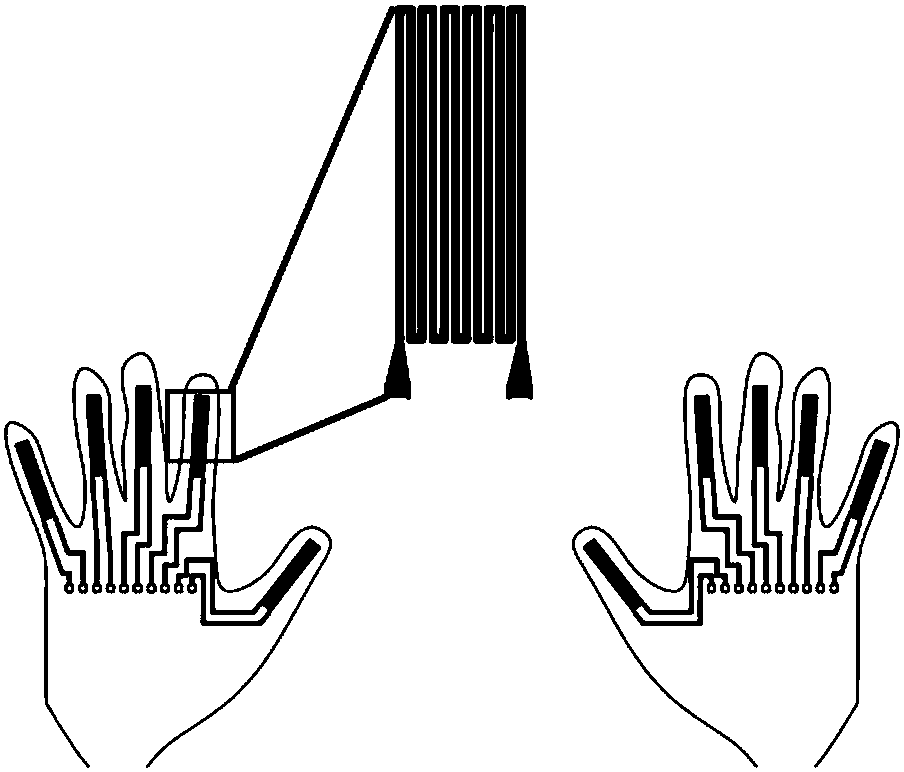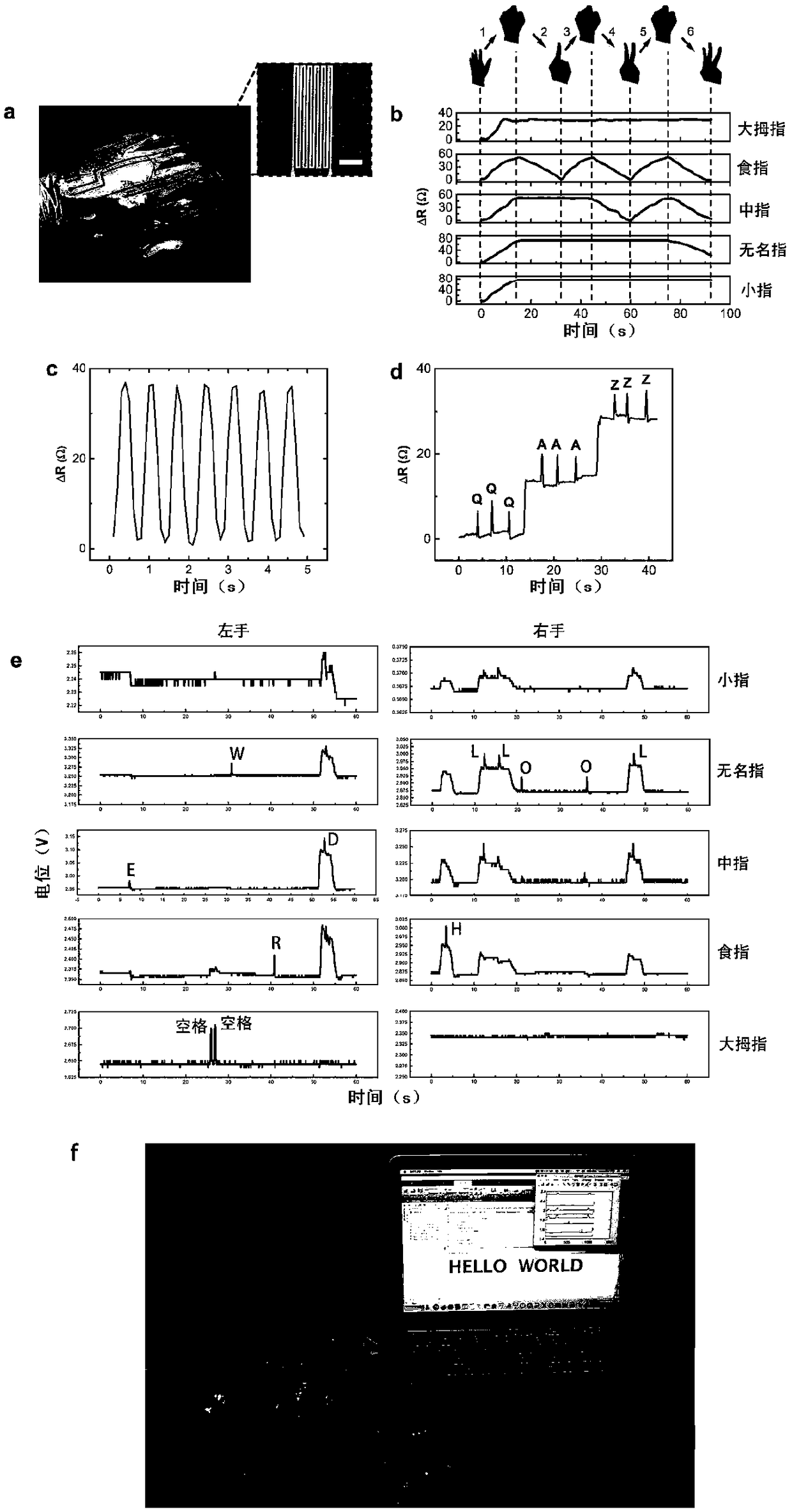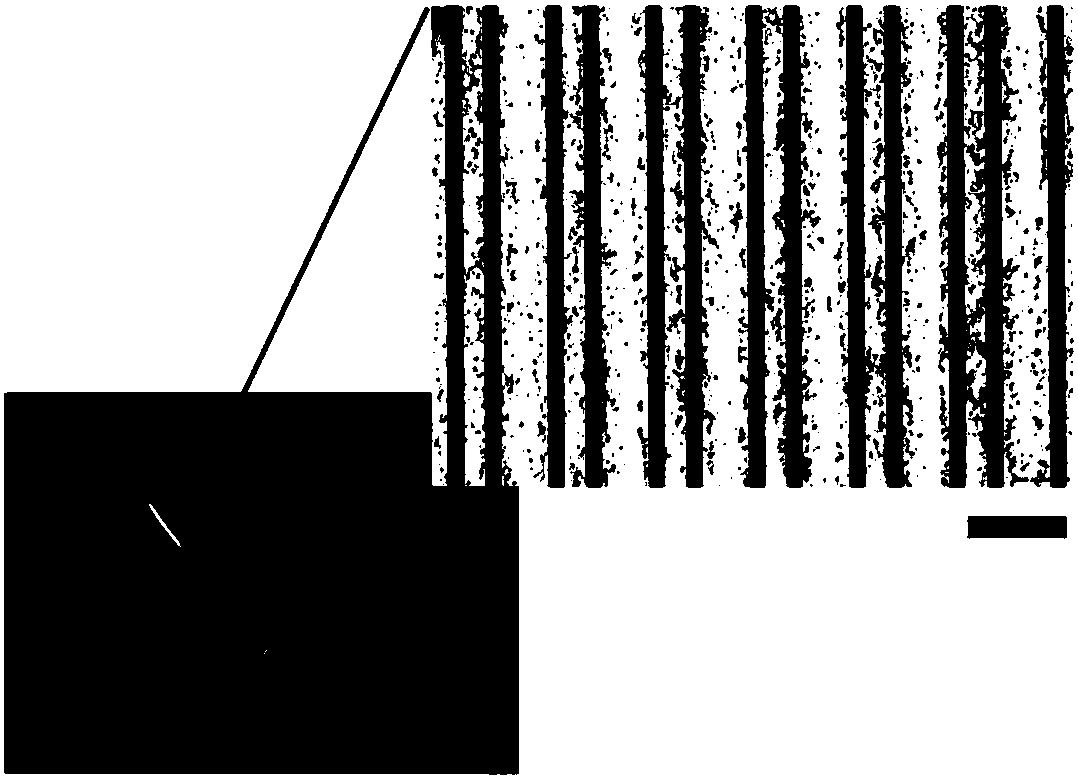Liquid metal patterning technology-based strain sensor and virtual keyboard thereof
A strain sensor and liquid metal technology, which is applied in the transmission of sensing components, instruments, graphic reading and other directions using electric/magnetic devices, which can solve the problems of limiting equipment flexibility, deviation, and complex sensors, and achieve the effect of simple and efficient input.
- Summary
- Abstract
- Description
- Claims
- Application Information
AI Technical Summary
Problems solved by technology
Method used
Image
Examples
Embodiment 1
[0083] This example is used to illustrate the preparation method of the strain sensor of the present invention.
[0084]Put 1 g of liquid indium-gallium eutectic alloy (EGaIn Ga 75.5%wt In 24.5%wt) in 1 ml of n-octanol solution, and use an ultrasonic cell breaker to sonicate for 60s at an amplitude of 30%, to obtain a gray liquid metal suspension. Turbid liquid, the metal is dispersed into small particles with an average particle size of 1500nm. The core of the small particles is liquid metal, and the outside is covered by a thin oxide film. In order to achieve complete transfer, the PET film was selected as the original pattern layer, and the PDMS solution was prepared according to the ratio of PDMS prepolymer: curing agent mass ratio of 10:1, and fully mixed with a homogenizer. fabricated on PET film using screen printing figure 1 the graph shown. And the line width was measured with a high-definition video microscope, and the width was 200 microns. Place the pattern on ...
Embodiment 2
[0087] This example is used to illustrate the preparation method of the strain sensor of the present invention.
[0088] Put 2g of liquid indium-gallium-tin alloy (In(22)Ga(68)Sn(10)) in 1ml of 1,4-butyrolactone, and use an electric grinder to rotate at the maximum speed (sixth gear, 11600rpm) at high speed The liquid metal is sheared to obtain a liquid metal suspension, and the metal is dispersed into small particles with an average particle diameter of 2400nm. The core of the small particles is liquid metal, and the outside is covered by a thin oxide film. In order to achieve complete transfer, glass is selected as the original pattern layer, and the elastomer solution is prepared according to the mass ratio of Smooth-On Ecoflex 0030 A component and B component at a ratio of 1:1, and fully mixed with a glue homogenizer. Wave-shaped sensor patterns were fabricated on glass using screen printing technology. The line width was measured with a high-definition video microscope ...
Embodiment 3
[0090] This embodiment is used to illustrate the preparation method of the strain sensor patch of the present invention.
[0091] Prepare the PDMS solution according to the ratio of PDMS prepolymer: curing agent mass ratio of 10:1, and add 5, 10, 15, 20 microliters of PEIE (ethoxylated polyethyleneimine polyethoxyethylene imine) per 10 g of PDMS solution Solution, after fully mixing, cast the solution on the pattern of the PET film after drying in Example 1. After defoaming in a vacuum oven at room temperature for 10 minutes, place it in an oven at 80 degrees Celsius for 2 hours. When the solution was solidified, the PEIE-doped PDMS was carefully peeled off from the PET, and the desired liquid metal pattern was transferred onto the PEIE-doped PDMS. The PEIE-doped PDMS itself is sticky and can fit tightly on gloves and skin. The higher the content of PEIE, the greater the viscosity of PDMS itself. And it has good conductivity, and its resistance changes linearly with the inc...
PUM
 Login to View More
Login to View More Abstract
Description
Claims
Application Information
 Login to View More
Login to View More - R&D
- Intellectual Property
- Life Sciences
- Materials
- Tech Scout
- Unparalleled Data Quality
- Higher Quality Content
- 60% Fewer Hallucinations
Browse by: Latest US Patents, China's latest patents, Technical Efficacy Thesaurus, Application Domain, Technology Topic, Popular Technical Reports.
© 2025 PatSnap. All rights reserved.Legal|Privacy policy|Modern Slavery Act Transparency Statement|Sitemap|About US| Contact US: help@patsnap.com



